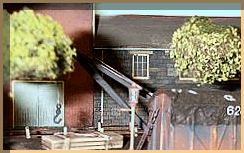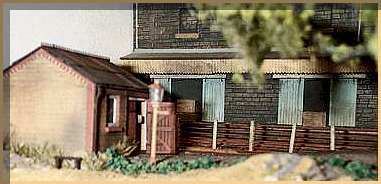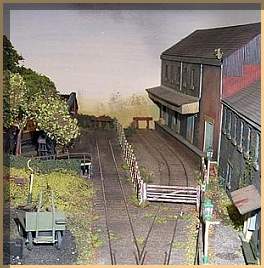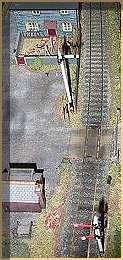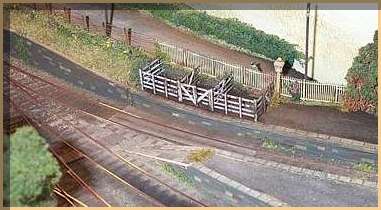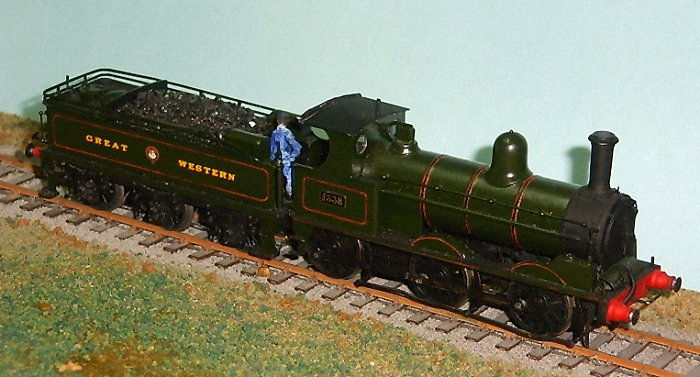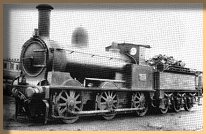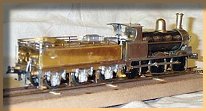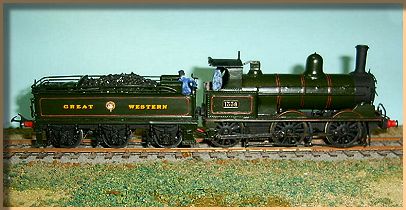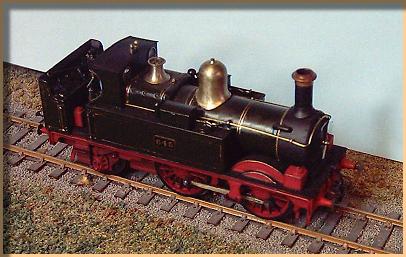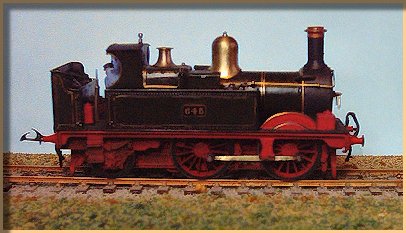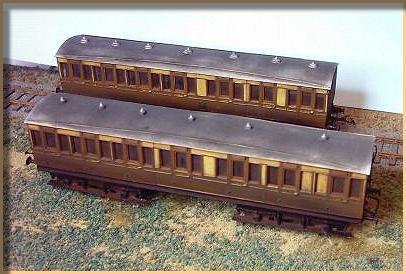| Section Page | Previous Page | Next Page |
Drefach Felindrecourtesy Pete Morris
On this page we are introduced to 'Drefach Felindre', an OO Gauge pre-grouping layout set in West Wales. The layout depicts the Manchester & Milford Railway c 1910, shortly after absorption into the GWR. All pictures shown here are copyright and courtesy Pete Morris, and were first displayed in the files of the britrail e-group. Many thanks to Pete for allowing use of the images. The pictures on the right show: GWR No. 1338 in fully lined livery; a section of the goods facilities; the goods shed; four-wheel brake in 1910 livery; scratch-built M&MR coaches; trackwork and signalling; the yard, including a working gate; Dean 40-footer in all brown 1908–1912 livery; Pontnewydd Brake Van built from a Falcon Brass kit; the cattle dock.
Ex-MMR No. 1338 This loco was bought by the Manchester & Milford Railway from the LNWR around the turn of the century, and I would imagine ran 'as bought' under the MMR. When the GWR took control of the rather questionable little MMR empire in 1911, they surprisingly kept No. 1338 in traffic with very little modification. They covered the gaping hole in front of the smokebox favoured by the LNWR with a metal plate, painted it and nailed a Dean tender – which was wider than the loco – on the back. It is in this form that the loco was modelled. I built the loco in '00' gauge from a London Road Models LNWR Coal Engine loco kit coupled to a Falcon Brass Dean tender kit. It has the correct LNWR 'H' section Romford wheels on the loco and the chassis has been compensated. There isn't much room for motors etc in there, and due to this there is a slight protrusion of the motor into the cab. The crew do a sterling job of hiding this, though. Due to this it has only a small motor and is not mightily powerful, but it is a smooth runner and looks its best on a short train of small bogie or 4-wheelers anyway. The livery is the earlier darker GWR green, lined in orange. It never had the dignity of any polished brass. The real No. 1388 survived till about 1920(ish) when the number got transferred to an 0-6-0 saddle tank.
517 Class in Edwardian livery This was built by myself from an Alan Gibson kit a while back and was featured in Model Rail magazine in its previous form in 1930s livery complete with cab. Since then it has been time-warped to represent the class in an earlier form minus weather protection for the 'softy' drivers and firemen of the twenties. The livery was changed to the pre-1912 darker or 'Wolverhampton' shade of green, lined out and the rather spectacular 'Indian red' frames. The polished brass items are polished brass. The chassis is compensated and it is a lovely smooth and very quiet runner. Unfortunately, I erroneously numbered her '645'.
Ex-MMR Bogie Coaches This pair (MMR nos. 12 and 13) were made by splicing a collection of Ratio 4-wheeler kits to represent the bodies and mounting them on white metal GWR bogies. The models represent the coaches as modified by the GWR, but are painted in a guess at MMR colours for variety. The coaches were made using the only drawings available and are only as accurate as that; information about the old MMR is understandably pretty sketchy. They are fairly well weathered as I wouldn't think that they were very highly thought of by their new owners, and didn't last long anyway. |
|||||||||||||||
| Section Page | Previous Page | Next Page |


